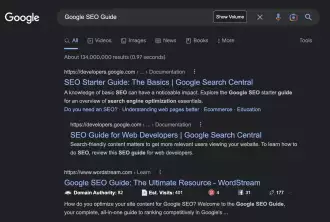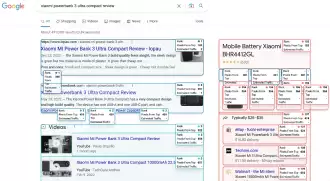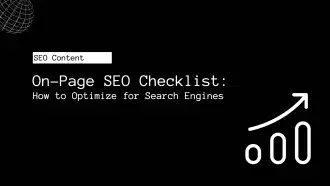In search engine optimization (SEO), a blog is like a mouthpiece for your website. It’s the one-way way of delivering content to search engine crawlers, who index your content and can thus boost ranking.
The search engine results page (SERP) is the user’s first glance at what results come up when someone searches for a keyword relevant to your business. A blog post written on an important keyword with a high search volume and low competition is likely to get a high organic ranking.
As with all things in building an online presence, the success of your blog will largely depend on how much research and planning you put into it. In this blog series, we will talk about the basics of blog optimization and give you tips on how you can optimize your blog for maximum organic visibility without breaking the bank.
Getting started
SEO stands for search engine optimization. It’s the process of structuring websites and accompanying content to obtain traffic from search engines such as Google and Bing.
To optimize your site content for Google SEO, you’ll want to focus on factors like keyword research, copywriting, on-page optimization, and organic visibility.
When optimizing your content for search engine results pages (SERPs), it’s important to include relevant keyword tags and titles in a conversational tone and meaningful content.
Ultimately, by following these steps, you can ensure that your target audience finds your site when they search for products and services online.
However, if you’re looking for additional guidance on how to optimize your content for search engine results pages, check out the Google SEO Guide. It provides tips and best practices on how to effectively perform keyword research, write engaging content with keyword optimization in mind, and more.
They can access tools such as the Keyword Planner, which helps them identify potential keywords and phrases that users may search for when searching on Google or other search engines.
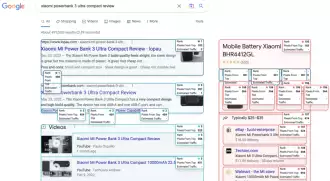
Are you on Google?
To determine if your site is indexed by Google, do a “site: search” for your home URL. To implement basic SEO strategies that can help your offerings get found on Google, make sure your website is crawlable, indexable, and secure (SSL). Additionally, sign up for Search Console to rank on Google. Optimizing visibility on Google involves serving high-quality content to users and making sure your content is fast and easy to access on all devices.
Other important steps in ensuring optimal visibility on Google include local business options and keyword research. Sign up for search engine optimization (SEO) tools that can help with keyword research and optimization of your content.
This will help you rank higher on search engine results pages (SERPs). Other important factors to consider when ranking on search engine results include the relevance of content and keyword optimization.
Determine whether your site is in Google’s index
Here’s a step-by-step guide to check if your website is indexed by search engines like Google and Bing.
Step 1: Enter the URL of your domain in the search bar using the following format: “site:yourdomain.com”. For example, “site:mystunningwebsite.com”.
Step 2: Check the result page to see how many pages are indexed. If you see a large number, it means that your website is indexed by Google.
Step 3: If you’re still not sure, you can also use an online Google index checker tool created by small SEO tools to verify how many webpages of your website are indexed.
Step 4: Lastly, if you’ve just added an internal link to your page and want to double-check if the page has been indexed yet, paste it into Google’s URL inspection tool and hit the “Request indexing” button. This will let Google know that the page is ready for its search engine robots to crawl and index it.
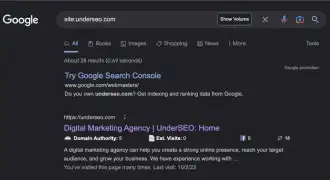
If your site isn’t on Google
If your search engine optimization (SEO) efforts are not resulting in high search visibility for your website, you may want to take a closer look at your website’s performance. Google Search Console is a web-based tool that allows you to monitor your Google search ranking and traffic over time, as well as track specific keyword rankings and traffic trends.
You can use Search Console to submit your site’s sitemap, which contains all of the pages on your website relevant to search engine optimization. Once the sitemap is submitted, search engines like Google will be able to properly crawl and index your site. Besides submitting the sitemap, you must also post your site on social media platforms like Facebook and Twitter so that potential visitors can find and engage with it online. Additionally, you should optimize your website for mobile devices by adding responsive web design or making it fully responsive.
Besides optimizing your website for search visibility, it’s also important to monitor its performance over time. By regularly tracking keyword rankings and traffic trends on Search Console, you can see how organic search results are changing from day to day. You can also use Search Console to view keyword reports that show search results for a specific keyword or keywords over time. This way, you can identify potential keyword issues before they become serious problems for your search visibility.
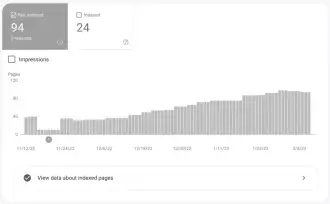
How do I get my site on Google?
Posting your site on the web is the most important step to getting your site listed on Google. You can submit a sitemap to Google Search Console to help it find and index your site faster.
The best way to optimize your website for search results on Google is by following SEO best practices such as keyword research, optimization, and having a strong content strategy.
Additionally, submitting a Google search engine optimization (SEO) audit to search engine optimization professionals who have experience with Google search engines can help ensure that you are optimizing your website for search results on Google. SEO should be a priority for any business looking to be found on Google search results.
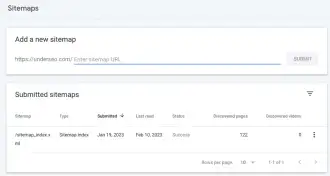
Do you need an SEO expert?
To improve visibility on search engine results pages (SERP), it’s necessary to implement some basic SEO strategies. These include implementing keyword research and optimization of an existing website.
An SEO expert can help with this process. They can assist with keyword research and optimization, as well as review website structure to ensure it is optimized for search engine results.
An SEO expert can also provide useful services such as content development, keyword research, and website structure review. When hiring an SEO expert, be sure to look for results from previous and current clients to ensure you are making the best decision for your business. It’s vital to ensure you are hiring someone with proven results and a track record of success.
Help Google find your content
Submitting a sitemap can help Google find your content on your website. A sitemap is a document that lists all the pages on your website and their titles, URLs, and meta description. This helps search engines find your content more quickly.
- Google also finds pages through links from other pages, so it is important to promote your website. This can be done by putting links on social media platforms and in online reviews. Of course, you must link to your website from keyword-rich text on your page as well.
- Smartphones can render a broad range of HTML5 specifications, making it important to make sure your website is mobile-friendly. The HTML5 standard specifies features such as web apps, video, and audio that are better suited for mobile devices. These features make websites load quickly and provide a better user experience when viewed on a mobile device. In addition, make sure that your website’s content is optimized for search engine optimization (SEO). This means making use of keyword research and writing content that is relevant to search query results.
- Google Search Console provides tools to help you submit your content to Google and monitor how you’re doing in Google Search. From here, you can track keyword ranking with keyword research tools and analyze search engine traffic with insights reports. You can also identify issues and fixes them with audits or keyword suggestions with the search console’s keyword tool
By following these tips, you can improve the visibility of your content on the internet and increase the chances of getting noticed by potential customers.
Tell Google which pages you don’t want to be crawled
To prevent your content from appearing in search results, use a ‘noindex’ tag in the header of a page to indicate that search engines should not index this page. This tag can be used to prevent search engine spiders from crawling the page and rendering it on search engine results pages.
You can also use a robots.txt file in the root directory of your site to instruct search engine robots not to crawl particular pages or directories.
This is the best way to block unwanted crawling of specific pages or content on your website. However, certain pages blocked by robots.txt can still be crawled, so for sensitive pages, consider a more secure method as well.
Quick Start SEO Guide
– SEO is a process of optimizing your website for search engines, the biggest being Google. This includes implementing basic strategies like keyword research and optimization, ensuring content on your website is relevant and engaging to search engine ranking factors, and making sure your website is compliant with organic search engine guidelines.
– It’s important for businesses to implement basic strategies to help their offerings get found on search engine results pages. This helps boost visibility and visibility can lead to increased organic search traffic, which can lead to increased sales.
– To get started with SEO, you can start by downloading the ‘Start Building an Edge With SEO’ pack from Shopify. This includes everything you need to get started with SEO basics.
#1 How Search Engines Work – Crawling, Indexing, and Ranking
Search engine optimization (SEO) is the process of improving the visibility of a website in search engines like Google, Yahoo, and Bing. SEO involves creating high-quality content on a website, as well as providing other forms of optimization such as creating useful metadata, adding social media links, and keyword optimization.
Search engine optimization involves several steps: search engine optimization, content optimization, social media optimization, keyword optimization, and link building. Search engine optimization involves optimizing a website for search engine results pages (SERP). Search engine crawlers use bots to follow hyperlinks and discover new web pages. They render the page by using HTML, JavaScript, and CSS information.
The search engine algorithm analyzes the content and metadata of the pages they discovered and adds them to a database. This process allows search engines to quickly access relevant information on the internet. Overall, search engine optimization is a critical part of any digital marketing strategy that seeks to improve visibility in search results.
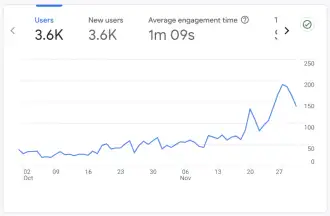
#2 Keyword Research
Search engine optimization (SEO) is the process of improving the visibility of a website in organic search results on search engines such as Google and Bing. It involves creating unique content on the web and optimization of that content to be favorable for search engines. SEO helps show Google that you most deserve to rank.
Keyword research is one of the most important steps in SEO for Google. You can optimize your content around keywords that people type into Google. This way, you can rank your blog posts and landing pages higher in search results. Furthermore, search engine optimization strategies help your business attract more customers through social media platforms, display ads, and other online advertising channels.
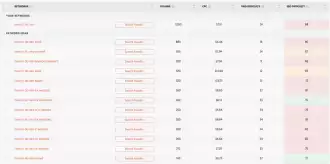
#3 On-Site Optimization
When it comes to the optimization of your website, you must use search engine optimization (SEO) techniques to make your pages better discoverable by search engines. You must utilize SEO-friendly page titles to help search engines scan and index your pages. It is also essential to upload an XML Sitemap file to help search engine bots crawl the site.
Furthermore, you can use Google Search Console to check for errors on your website. Identifying and fixing common speed problems with tools such as W3 Total Cache is also a good idea.
Long titles, keyword stuffing, and violating quality guidelines can harm user experience and rankings of search results. Thus, it is important to optimize your website for search engine visibility and usability. It will help you increase traffic and improve user experience.
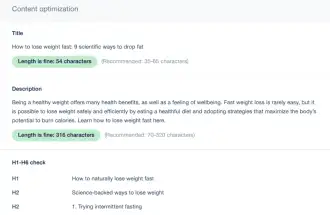
#4 Technical SEO
Technical SEO is a process that involves optimizing your website with the aim of improving your ranking on search engine results and increasing organic (non-paid) traffic. Technical SEO focuses on the structure and code of your website, as well as helping to ensure it is user-friendly.
When optimizing content for people, you should make sure it covers relevant topics, includes keywords, and is unique, well-written, and up-to-date. Optimizing your site for search engines involves considerations such as page speed, mobile-friendliness, and setting up and optimizing meta tags.
Technical SEO significantly improves the visibility of your website in search results and can help to increase both organic traffic and visibility over time. Businesses need to optimize their websites for search engines to ensure they reach potential customers and stay competitive in today’s fast-paced digital economy.
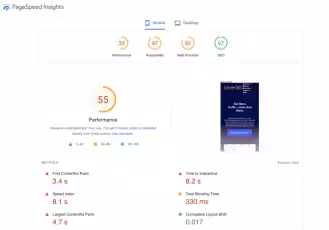
#5 Link Building & Establishing Authority
Link building is a challenging and time-consuming activity for search engine optimization (SEO). It involves acquiring new backlinks by constructing high-quality content on your website, social media pages, and other relevant websites. In addition to high-quality content, building authoritative links requires strategic thinking and patience.
Internal linking is an important SEO practice that can help improve the visibility of your website in search results. By creating relevant links within your website, you can pass link equity and improve its ranking in Google search results.
Other methods of obtaining backlinks include outreach, creating amazing content, and emailing websites to let them know about it. These strategies will help you build an authoritative presence on the web and achieve higher search engine visibility.
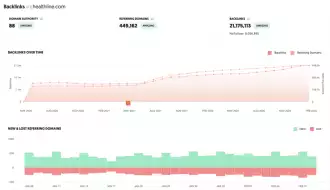
#6 Measuring, Prioritizing, & Executing SEO
SEO involves five main steps: keyword research, content creation, on-page SEO, link building, and technical SEO. The first step in any SEO strategy is keyword research. Keyword research involves analyzing search engine results pages (SERPs) to identify potential search terms and keyword combinations that users may be searching for. This step allows marketers to prioritize keywords to focus their SEO efforts. Once search terms have been identified, content creation can begin.
Creating high-quality content that is relevant to search engine results pages can help improve ranking on SERP. However, high-quality content does not always guarantee success. To ensure optimization, on-page SEO must also be implemented. On-page SEO focuses on optimizing web pages and content for search engines, such as by using internal links, keyword optimization, and other methods.
Since all search results are ranked by search engine algorithms, the optimization of the website itself is an important part of any search engine optimization strategy. Technical SEO involves using strategies and techniques such as internal linking and keyword optimization to ensure that web pages are easy to find and read for users on search engines like Google. Off-site SEO refers to efforts to improve the rankings of websites outside of the company’s domain.
For example, social media profiles can be optimized for keywords relevant to a particular market or niche; blog posts can be written with keyword-involving titles and descriptions; and website links can be updated or added to provide visibility to key content on other websites. By prioritizing keyword research and implementing best practices in all areas of website optimization, companies can optimize their website for search engine results pages and achieve success in their online marketing efforts
Frequently Asked Questions
What are the 3 Cs of SEO?
The three C’s of SEO are content, search engine discovery and indexing, and optimization of websites to appear in search engine results pages.
When it comes to content, your website must be well-written and keyword rich. This means that you should include keyword-rich titles, meta descriptions, and other elements on your website to help search engines identify, index, and rank your content higher in search engine results pages.
In addition to keyword optimization, you need to make sure that your website is search engine discoverable. This means creating a simple but user-friendly design, including easy-to-find search engine optimization tactics like keyword placement in headings and links to your website from other websites.
Lastly, you need to optimize your website for search engine results pages (SERPs). SERP optimization can involve things like adding keyword metadata to images, improving the speed and loading time of your website and ensuring that your website appears as the top result for relevant queries.
What are the 4 types of SEO?
There are four main types of SEO:
1. Ranking optimization: This type of SEO focuses on improving a website’s ranking in search engine results pages (SERPs). This can be done by optimizing website content so that it can be read and ranked by search engine bots, as well as by understanding what types of content search engine users and customers want or need.
2. Link building: This form of SEO involves acquiring links from high-quality websites to help improve a website’s ranking in search engine results pages.
3. Social media optimization: This type of SEO revolves around using social media platforms like Twitter, Facebook, and Google Plus to promote and amplify the reach of a website’s content.
4. Measures are taken to secure organic search results: This category includes techniques like keyword research, on-page optimization, link building, and keyword placement in anchor text.
How to do SEO on Google?
When it comes to SEO on Google, there are a few basics that you should keep in mind. Of course, optimization of the website content and layout is essential, but there are also some technical aspects that you must take into account to have your website rank high in search engine results pages.
Here are a few of those:
– Make sure your website is properly designed and user-friendly.
– Use keyword-rich titles and meta descriptions that accurately reflect your website’s content.
– Once you’ve created your website, it’s important to add relevant and keyword-rich links throughout the web pages.
– Invest in quality backlinks from high-quality websites that resonate with the keywords that you’re targeting.
– Monitor your website’s ranking on search engine results pages (SERPs) regularly and make necessary adjustments as needed.
Remember: SEO is an ongoing process that requires constant dedication and effort on your part, but results can be very rewarding. Start today by implementing some of the basics mentioned here, and watch your business grow over time!
Does Google have an SEO tool?
Google does have an SEO tool, but it’s not as well-known as some of the others out there.
Google SEO Guide is a resource that allows users to understand SEO and rank competitively in Google’s search engine. This guide covers topics such as on-page optimization, backlinking, link building, social media optimization, and more.
Since SEO is an umbrella term, it can cover techniques and tactics designed to increase organic search traffic, ensure target audiences find websites, and make it easier for search engine bots to read and rank websites.
This guide is meant for users who own, manage, monetize, or promote online content via Google Search. So if you want to learn more about optimizing your website for search engine ranking, then this is the guide for you!
Conclusion
Google algorithms decide what search engine results (SERPs) you see on search engine results pages (SERPs) and how high your website appears on SERPs. Therefore, optimizing your website to be the best in search engine ranking results is essential for any business or individual looking to get higher ranking search engine results. You first have to understand how search engine optimization works and then research keyword phrases that are relevant to your website.
Next, optimize your website’s content by focusing on user-friendly content and designing appealing layouts. Furthermore, build links to your website from high-quality sources like social media platforms and search engine optimization blogs.
Last but not least, execute an SEO strategy that helps you prioritize on-page optimization efforts. If followed correctly, the Google algorithm will help you rank higher in search engine results page rankings.

